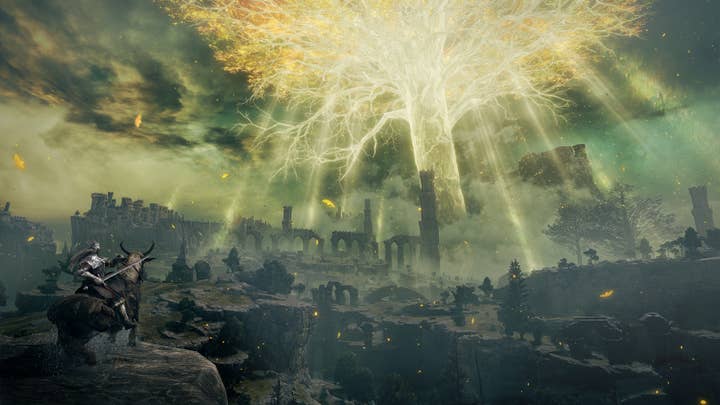Elden Ring: A discussion on the differences between accessibility and game design
Sarah Doyle, creative producer at Kids Industries, talks accessibility trends in game design
In the wake of the incredibly well received Elden Ring by From Software, a recurring conversation relating to the difficulty of the game has once again been stirring up critics and fans alike.
The topics of game difficulty and 'easy' modes are incredibly divisive amongst gamers, and some of the accessibility issues unfortunately seem to have been swept up into this narrative and misunderstood. So, using Elden Ring as a starting point, let's take a look at how accessibility is often misunderstood, what it actually is, what that means for development and how to have positive and inclusive conversations in the future.
Series director Hidetaka Miyazaki's interview with PlayStation kicked this latest discussion off when he said: "We don't try to force difficulty or make things hard for the sake of it. We want players to use their cunning, study the game, memorise what's happening, and learn from their mistakes. We don't want players to feel like the game is unfairly punishing, but rather that there's a chance to win a difficult encounter and make progress.

"We understand that Souls-like games are regularly associated with impossible levels of difficulty with high barriers to entry. But we try to design the games to make the cycle of repeatedly trying to overcome these challenges enjoyable in itself."
Understandably, the immediate response from the fanbase was, of course, a passionate defence of the difficulty of the series and design of the game, arguing that players need to persevere through the bosses and that the beauty of Elden Ring lies in the freedom and ability to go wherever you want in a vast open world, as From Software intended. Indeed, this is a game that will not hold your hand -- in that you have to learn the complexities of the bosses and their attack patterns -- then master to progress; in other words, "git gud."
But that's not actually the issue here.
To reduce accessibility requirements into an over-simplified 'easy mode' is a fundamental misunderstanding of what accessibility is and what gamers with certain impairments actually need. No one is demanding an easy mode.
What is considered an accessibility feature?
At its simplest, accessibility features are any feature or option in a game that allows a player to customise the game experience to their unique user needs.
Quite often the first things that spring to mind when we think of these kinds of features are colour-blind modes or remapping controls, but a lot of common options are actually accessibility features too -- the ability to customise audio levels or music, for example.
More thought needs to be given to levelling up play design for disabled players to enable them to react quickly enough to compete
Whilst these features aren't perceived as 'accessibility' ones, they are beneficial for players with sensory issues. Many gamers will use these features regardless of who they are designed for; the most common one being subtitles. I myself always play with subtitles on, as sometimes it can be easy to miss key details when a big set piece explosion is going off in the background. And I'm always the type to whack the brightness up to max playing anything remotely scary (yes, judge me all you want).
In fact, in a Twitter thread, David Tisserand at Ubisoft reported that 95% of Assassin's Creed Odyssey players didn't turn subtitles off when they were the default.
You never know when you may need to rely on these features yourself. Perhaps you break a bone and still want to keep playing your favourite game, or maybe you usually play with glasses or prefer listening to other music rather than the sound effects from the game.
Returning to Elden Ring, a few points made by some of the disabled community have little to nothing to do with the difficulty at all and are more to do with the physical ability to play the game. For example, a player can remap their keys, but it can't be remapped to allow one-handed play. There are mobility issues using the dash and sprint on the same input keys and also dual button input, which again requires two hands. For visually impaired gamers, it is no doubt disappointing that, while subtitles are available, they aren't resizable and there are currently no colour-blind options.
It is not about making games easier; it's about making them fair
The issue of the high difficulty is not with gamers giving up, but instead is about physical mobility. More thought needs to be given to levelling up play design for disabled players to enable them to react quickly enough to compete. After all, how can a disabled player grind and 'git gud' when they are physically unable to do so, to the point where no amount of practice will improve?
To Elden Ring's credit, there are definitely some game design choices that have been made to help players, such as using magical classes which allow players a little more opportunity to keep a distance from enemies and summoning additional help. And whilst overall it is the most accessible game in the Souls series, it's clear that there's still a lot more to be offered, especially considering it is a AAA title.

Changes over the past two years
There have been some excellent games and options emerging in recent years, from AAA to indie, making more than just technical advancements and more recently some thoughtful and considered features, too.
To reduce accessibility requirements into an over-simplified 'easy mode' is a fundamental misunderstanding of what accessibility is
2021 was a particularly great year for technical achievements in accessibility, building on the incredibly comprehensive release of The Last of Us: Part 2 in 2020, which raised the bar with what was possible to include in a AAA game. Giving players ways to customise their experiences in ways that hadn't been seen before, it featured over 60 accessibility settings, with expanded options focused on fine motor and hearing, as well as completely new features that benefit low-vision and blind players.
We must also draw attention to Playground Games' thorough accessibility integration with Forza Horizon 5, which included American and British Sign Language support for cinematic cutscenes, offline gameplay modes to slow down, visual high contrast mode and many, many more options. Their work with members of the Gamers and Disability community to identify the issues faced has really paid off.
There's also the fantastic indie title from Charles McGregor, HyperDot which launched in 2019. He started an experimental research project called #HyperDotA11y, which partnered with disabled content creators to stream the game and discuss their experiences, then used their feedback to identify updates. The game features extensive flexible options to play the game.
Accessibility requirements need to be considered in pre-production
The earlier you start to think about accessibility, the easier it is to integrate options seamlessly into the game design. Thinking about these features early allows time for them to be scoped out, because depending on the size and scale of the game (and team) there may not be time or budget to add lots of accessibility features -- but even a smaller offering is better than nothing.
Quite often the best way to include accessible options in a game is to clearly analyse the core mechanics and consider how might this create a barrier for a player. It's about demonstrating a fundamental understanding of your game and thinking critically about the user experience and audience. It goes deeper than just a simple toggle on and off, although that can be a good place to start.
I'd strongly encourage readers to read the Gaming Accessibility Guidelines and to actually connect with players who have disabilities. There are 14 million disabled people in the UK alone and very often their needs are overlooked. Couple that with 66% of gamers with an impairment or condition saying they face barriers or issues related to gaming, and you can gauge the efforts needed.
As awareness increases, it feels like we are headed in a positive direction for the future of accessible games. The discourse around Elden Ring provided a good opportunity to clarify why it is so important, and hopefully how there is much more to the discourse than simply difficulty modes.
Further reading/watching
- Game Accessibility Guidelines
- The Curb effect
- Can I Play That?
- Able Gamers charity
- How Producers can make games more accessible
Previous articles on the GamesIndustry.biz Academy
Sarah Doyle is a creative producer at Kids Industries with an extensive background in design and UX, and an advocate for inclusive and accessible practices for products for children
